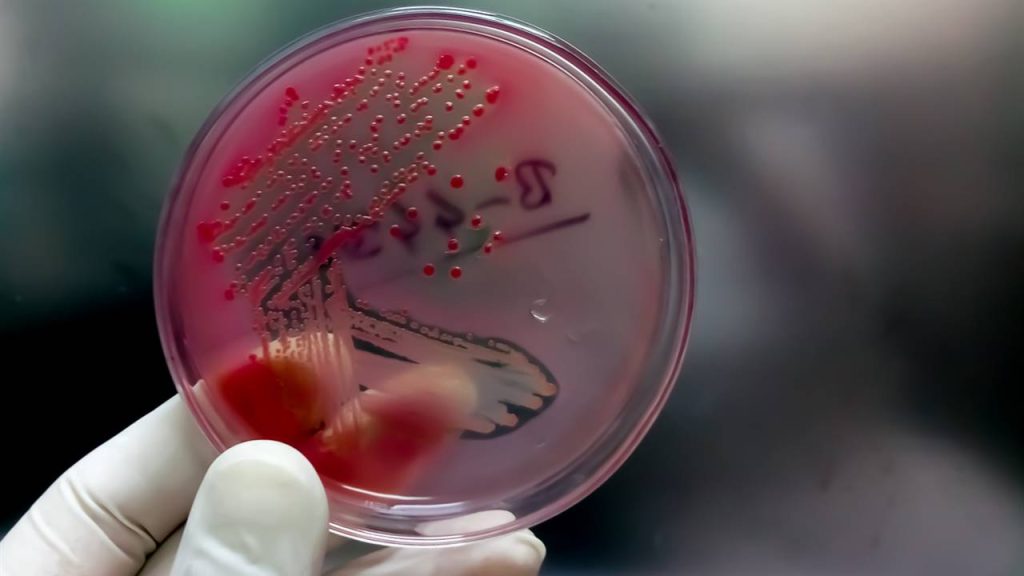Sexually transmitted infections continue to increase, especially among young people. We explain what are the modes of contagion and the symptoms of three of those that have increased the most: gonorrhea, syphilis and monkeypox.

- Gonorrhea: what it is and what its symptoms are
- Syphilis: what it is and what its symptoms are
- Monkeypox: what it is and what its symptoms are
In recent years, a large increase in sexually transmitted diseases or infections (STIs) has been detected, especially among young people, according to the latest report of the Ministry of Health on Epidemiological surveillance of sexually transmitted infections in Spain of 2021.
Two reasons could explain it: on the one hand, the detection of STIs has greatly improved and, on the other, risk behaviors have also increased a lot: that is, there are many people who do not use barrier measures such as condoms, the main tool to avoid contagion.
Some of the sexually transmitted diseases that have grown the most are gonorrhea, which increased by almost 20% between 2010 and 2021, and syphilis, by 8.5%. In this last year we have also seen an outbreak of a disease hitherto practically unknown in Europe, monkeypox. We review how they are spread and what their symptoms are.
GONORRHEA: WHAT IT IS AND WHAT ITS SYMPTOMS ARE
Gonorrhea is a common STI caused by the bacterium Neisseria gonorrhoeae. It is spread through sexual fluids (semen or vaginal fluids) and can be contracted through vaginal, anal, or oral sex or by sharing sex toys with an infected person.
It often causes no symptoms (especially in women), which makes it easier to spread it to others without knowing it. When it does cause symptoms, they are different in men and women.
Symptoms of gonorrhea in women:
- Abnormal vaginal discharge (white or yellowish).
- Pain in the lower abdomen or pelvis.
- Pain during sex.
- Pain or stinging when urinating.
- Bleeding between periods.
Symptoms of gonorrhea in men:
- White, yellow, or greenish discharge from the penis.
- Pain or stinging when urinating.
- Pain and swelling in the testicles.
When it affects the throat, gonorrhea can cause itching or pain and make it difficult to swallow.
If left untreated, gonorrhea can cause health problems such as pelvic inflammatory disease and infertility. In some cases, it can spread through the bloodstream and affect the joints or other parts of the body.
SYPHILIS: WHAT IT IS AND WHAT ITS SYMPTOMS ARE
Syphilis is also caused by bacteria and is spread by having unprotected vaginal, or oral sex with an infected person. It can progress through 4 stages and the first two are when syphilis is most contagious:
- Primary syphilis: A small, hard, soft, and usually painless sore (called a chancre) appears on the genitals or mouth, which goes away on its own within a few weeks or months. This does not mean that syphilis has disappeared. If no treatment is received, the infection will move to the second stage,
- Secondary syphilis: About 1 to 6 months after the chancre is gone, a rash appears that can cover the entire body (including the palms of the hands and feet) and does not usually itch. There may also be other symptoms that may come and go for months or years, such as fever, tiredness, warts-like sores, muscle aches, weight loss, headache, hair loss, or swollen glands. If left untreated, the disease will progress to the next stage.
- Latent syphilis: At this stage, which can last for years, there are no outward signs or symptoms of syphilis (although some people may have mild flare-ups from time to time), but the infection can damage the heart, bones, nerves, and organs. Without treatment, the infection can progress to the last stage.
- Late (or tertiary) syphilis: At this stage, which is reached by about 20% of people with syphilis who do not receive treatment, health problems are serious and can include brain damage, dementia, cognitive health problems, heart disease, muscle problems, damage to the nervous system, seizures, vision problems (including blindness).
MONKEYPOX: WHAT IT IS AND WHAT ITS SYMPTOMS ARE
Also known as seismic pox, it is a disease caused by the orthopxvirus virus. It is contracted through contact with sores, crusts, respiratory droplets or oral fluids from an infected person, usually through intimate contact in situations such as caresses, kissing or sex, so it can affect anyone.
The first symptoms may take several days or a week to appear, and include:
- Fever.
- Headache.
- Muscle aches.
- Back pain.
- Tiredness.
- Swollen lymph nodes.
- Latent syphilis: At this stage, which can last for years, there are no outward signs or symptoms of syphilis (although some people may have mild flare-ups from time to time), but the infection can damage the heart, bones, nerves, and organs. Without treatment, the infection can progress to the last stage.
- Late (or tertiary) syphilis: At this stage, which is reached by about 20% of people with syphilis who do not receive treatment, health problems are serious and can include brain damage, dementia, cognitive health problems, heart disease, muscle problems, damage to the nervous system, seizures, vision problems (including blindness).
MONKEYPOX: WHAT IT IS AND WHAT ITS SYMPTOMS ARE
Also known as seismic pox, it is a disease caused by the orthopxvirus virus. It is contracted through contact with sores, crusts, respiratory droplets or oral fluids from an infected person, usually through intimate contact in situations such as caresses, kissing or sex, so it can affect anyone.
The first symptoms may take several days or a week to appear, and include:
- Fever.
- Headache.
- Muscle aches.
- Back pain.
- Tiredness.
- Swollen lymph nodes.

